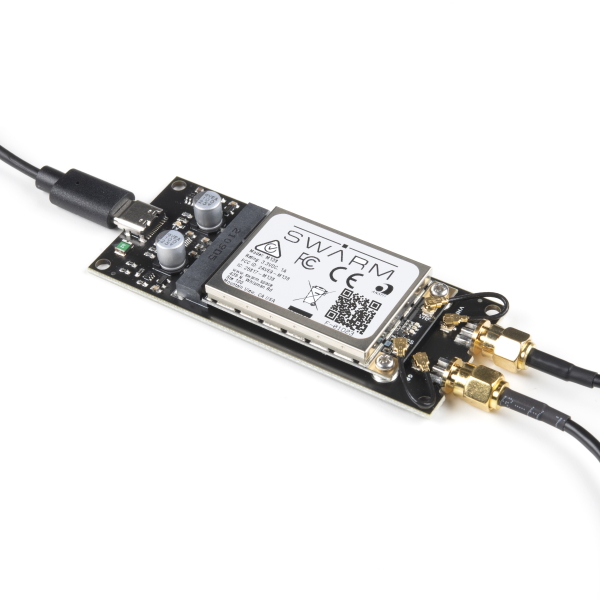Satellite Transceiver Breakout - Swarm M138 - Hookup Guide
This Tutorial is Retired!
This tutorial has been retired; the satellite service for this product will be terminated at the end of December 2024.
Introduction
Looking for a low-cost way to send and receive data messages via satellite? This is it! With a clear view of the sky, the Satellite Transceiver Breakout - Swarm M138 allows you to send and receive short messages. It works anywhere in the world, including the polar regions, far beyond the reach of WiFi and Cellular networks. It is perfect for a variety of low-bandwidth use cases: from connecting people and tracking vehicles, ships, or packages to relaying sensor data for agriculture, energy, and industrial IoT applications. The built-in GNSS receiver makes it perfect for many tracking applications.
We created the Satellite Transceiver Breakout to make using the Swarm M138 modem as easy as possible. Want to connect it to your laptop or Raspberry Pi and send and receive messages anywhere? You can absolutely do that. Want to hook it up to your Arduino board and send and receive messages via the modem's 3.3V UART Serial interface? You can absolutely do that too!
In this hookup guide, we: describe what's in the box; provide a short introduction to the Swarm network; describe the hardware present on the Transceiver Breakout; describe how to connect and power the board; and how to communicate with the modem using our Python and Arduino examples.
Want to read around the subject? You may find it useful to read these tutorials first:
Serial Communication
Logic Levels
Serial Terminal Basics
How to Work with Jumper Pads and PCB Traces
Three Quick Tips About Using U.FL
How to Install CH340 Drivers
Let's get started!
